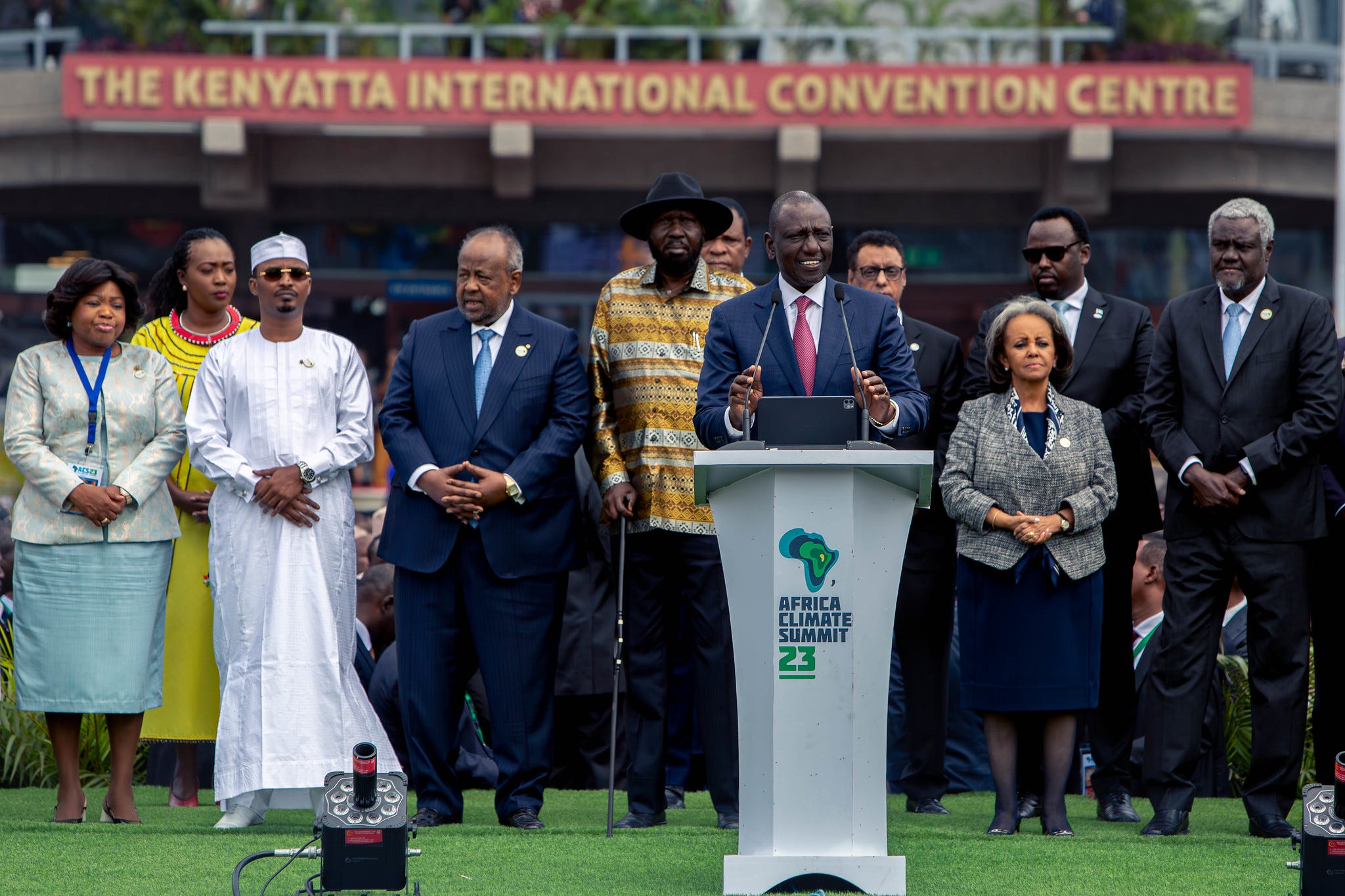How developing countries are trying to influence global climate negotiations
Good Afternoon!
I’m excited to tell you about the Kickstarter I’ve launched! As you know, I’m preparing to head to Dubai to cover the global climate negotiations and learn more about the negotiations news ecosystem. The Kickstarter will allow me to provide you daily, on-the-ground reporting from Dubai, and develop a long-term plan for climate negotiations coverage.
Please consider contributing to this project. As a reader of this newsletter, I assure you, it’ll turbocharge what you’re getting now.
To encourage your support, I’ll be publishing today and Thursday, focusing on the international aspect of climate. Today I’ll talk through what developing countries are looking for (which is frankly, the vast majority of the planet’s population and land mass) and Thursday I’ll review how climate remediation efforts are going in developed countries around the world.
-Mike

Kenyan President William Ruto, kicked off the Africa Climate Summit last June. (U.N. Photo)While the outcome for this year’s U.N. climate negotiations in Dubai this December is far from assured, this year has brought an unprecedented number of multilateral conferences in the lead up. As climate negotiations heat up, they are becoming as much about transforming the global economy as they are about ecological impacts. National leaders now see the climate negotiations as an opportunity to increase foreign investment and leverage their natural resources in the move towards sustainability. These pre-meetings are attempts by leaders to push and pull each other in advance of the big international summit in Dubai.
This Year’s Multilateral Climate Meetings
One Forest Summit – Communique – March 1-3
Bonn Subsidiary Bodies Conference – Report – June 6-16
Paris Financial Summit – Chair’s Summary – June 22-23
Amazon Summit – Belem Declaration - August 8-9
Africa Climate Summit – Leaders’ Declaration – September 6-8
G-20 Summit – Leaders’ Declaration – September 9-10
High Level Forum on Sustainable Development – Political Declaration – September 18-19
Middle East and North Africa Climate Week – October 8-12
Latin American Climate Week – October 23-27
Asia-Pacific Climate Summit – November 13-17
U.N. Climate Change Conference – November 30-December 12
The point of all these multilateral meetings is for less developed, less politically influential nations to push the big countries towards their agendas. The big countries are the biggest polluters, China, India, the U.S. and the European Union, and the biggest economies, the U.S., China, and the E.U.
Notably, the results from these meetings are less about setting carbon emissions mandates and more about preserving existing carbon sinks like forests and directing developed world finances to building green economies in developing countries. Readout and communiques from these meetings have had number of consistent themes, specifically:
- Increase direct development aid through multilateral development banks (MDBs) like the World Bank – To make this happen, the leading economic countries, like the U.S., E.U., Japan, and China, will have to funnel more of their national budgets to MDBs, which would then provide loans to developing countries for climate-related projects.
- Fully fund already promised aid, like the Loss and Damage Fund – Western nations promised at last year’s climate negotiations to finance this fund for developing nations impacted by climate-fueled disasters. Neither an annual amount or exactly which countries would put in how much was decided, but other U.N. funds count on around 40% to come from the U.S.
- Provide financial support for protecting forests – Both the One Forest Summit in Gabon and the Amazon Summit in Brazil emphasized that countries with tropical forests do not have enough resources to preserve and police their forests. Without funding from developed countries, they say they can’t guarantee the forests will be safe from widespread poaching and destruction.
- Back carbon trading systems that allow tropical forests to participate – Western countries are quickly setting up regional carbon trading schemes. Developing countries want access to those trading systems, so they can sell preservation of their forests for cash. The trouble is, almost every system developed for developing country carbon credits has been found fraudulent. In order for a system to work, Western countries will have to directly manage it
- Developing country debt restructuring and cancellation – A central part of the Bridgetown Initiative proposed by Barbados, and backed by over 100 countries, developing nations claim they fall into a “climate debt trap”, when recurring ecological disasters force them to borrow money to make repairs, layering on more and more debt payments so they can’t invest in their own economies. Lower debt payments, these countries say, would help them out of the debt trap.
- Increase private investment in green energy development – Multiple studies from the U.N., McKinsey, and the International Energy Agency suggest that to reach net zero by 2050, the private sector will have to increase green technology investment between $3 and $6 trillion every year. Developing countries are calling for Western private investment to be directed to them.
Each of these items require developed nations – basically the U.S., E.U., and China, to open their wallets to pay for them. Together they add up to astronomical sums – in the trillions of dollars per year – and even if they were politically feasible, it’s hard to imagine they could be economically possible.
It seems likely the developing world will be disappointed by the outcome of this year’s climate negotiations if it counts on Western wallets.
You reached the bottom of the newsletter! 3-D printed vegan fish has arrived.





